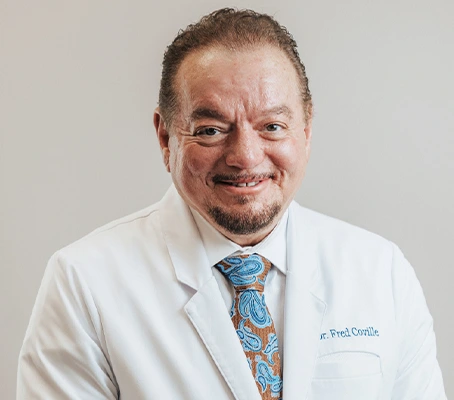- Select Language ▼
Cornerstone Plastic Surgery has partnered with Rejuvenessence to bring you an expert-led Weight Loss Program. Learn More on our partner’s website!
Hair loss occurs in men and women, although more often in men. Despite occurring more often in men, hereditary hair loss often comes from the mother’s side of the family. Causes of hair loss include:
Some causes, like stress, only cause temporary hair loss, while hair loss due to genetics will not grow back. However, hair on certain parts of the head retains the ability to grow hair, and these are used to restore hair.
Have you noticed that for men, hair on the sides and back of the head tends to last longer than other hair? That is called Male Pattern Baldness and is most commonly caused by dihydrotestosterone. This hormone causes hair follicles to stop making new hair. Surgical hair restoration harvests hair follicles from areas that still grow hair and are genetically predetermined not to fall out. We take these “terminal hairs” and move them to your thinning areas. Because the hairs on the back and sides of your head don’t have the same sensitivity to DHT, these follicles will keep producing hair.
For women, hair loss happens in different patterns, but the causes are similar to hair loss in men. While less common than in men, hair loss in women causes just as much emotional distress. An in depth consultation with Dr. Coville at one of our New Jersey offices in Linwood or Toms River, NJ will determine the best place to take follicles in your particular case.

If you experience hair thinning or hair loss, you may be a candidate for the procedure. Although more men have hair loss issues, women can benefit from this procedure too.
To determine if you will benefit from the procedure, the doctor may need to determine the cause of your hair loss and determine the best way to treat it.
Dr. Coville uses two techniques to collect healthy follicles:
Follicular Unit Transplant (FUT)
Often called a “strip” procedure, this method removes one or more strips of skin from the back or sides of the scalp. The hair follicles living in these strips can be separated and implanted where new hair growth is needed.
Follicular Unit Extraction
In this method, the doctor harvests follicles individually from the head. Dr. Coville uses a tool called NeoGraft, a device that helps collect follicles with great accuracy. The doctor will implant them in a natural-looking pattern.
Whichever method works best for you, the result will be having healthy follicles moved to your hair loss areas, where they can help restore the natural vibrance of healthy hair.
Both methods are outpatient procedures performed in Atlantic County. A local anesthetic numbs the scalp, and most patients report no significant discomfort. You may feel the doctor pressing on the areas being treated. The length of the procedure depends upon the technique and on how many follicles are implanted into the scalp.
The doctor will harvest either a strip of skin from the scalp or use the NeoGraft tool to remove individual follicles. In either case, the doctor prepares the scalp and implants the new follicles. These follicles will begin to grow hair just like they did in their previous location.
Within the first few days after surgery, your scalp may feel sore and swollen. During this time, you should minimize touching your head. You can usually return to work within a day or two of the procedure, but the redness and swelling may still be visible.
Within about ten days, you should start your routine hair care. You will have to wait several months to see the new follicles begin to grow visible hair, but the results are usually permanent.
As the new follicles settle into their new home and resume their natural cycle, they will begin to grow hair again. Hair growth takes time, so results from the procedure need time to become visible. Hair goes through resting and growth cycles, so your follicles will take a few months to fully return to their growth phase.
You should expect new hair appearing in about a month and visible treatment results in a few months. To make sure the results look as natural as possible, an experienced surgeon like Dr. Coville will follow the curves and lines of your natural hair patterns to give you the best results.
Written By: Dr. Frederick Coville
Frederick A. Coville, M.D., Cornerstone Plastic Surgery’s Owner and Medical Director
Frederick A. Coville, M.D., Cornerstone Plastic Surgery’s Owner and Medical Director, has been an Aesthetic and Reconstructive Plastic Surgeon for over 25 years. He firmly believes each of us possesses an inner “Foundational Beauty.”
As a student of beauty all his life, he calls upon his naturally artistic eye and God-given talents as a surgeon to deliver the results you demand. Dr. Fred likes to say, “It’s my job to help you find Your Beautiful!”
Request your consultation and let
us create a custom experience for you
